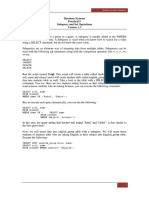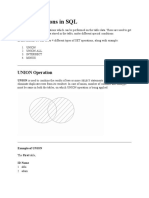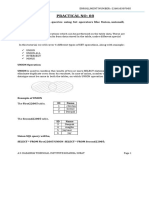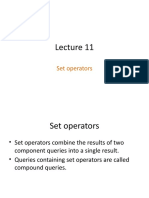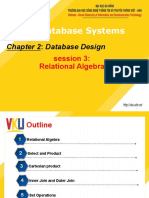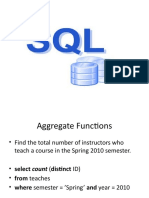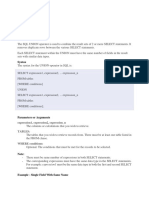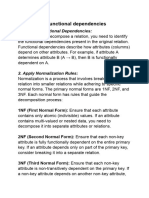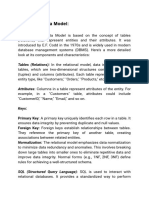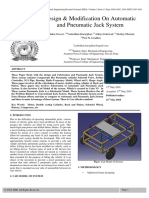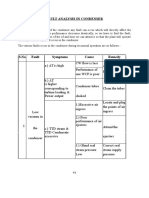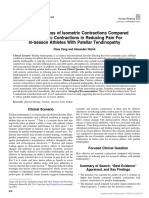0% found this document useful (0 votes)
29 views4 pagesSQL Set Operations Guide
The document discusses SQL set operations - union, intersect, and except - and how they correspond to mathematical set operations. It provides examples of using union to find courses taught in Fall 2009 or Spring 2010, intersect to find courses taught in both semesters, and except to find courses taught in Fall 2009 but not Spring 2010. It also notes that union and except by default eliminate duplicate tuples while intersect returns the minimum number of duplicates.
Uploaded by
tiyixe1817Copyright
© © All Rights Reserved
We take content rights seriously. If you suspect this is your content, claim it here.
Available Formats
Download as PDF, TXT or read online on Scribd
0% found this document useful (0 votes)
29 views4 pagesSQL Set Operations Guide
The document discusses SQL set operations - union, intersect, and except - and how they correspond to mathematical set operations. It provides examples of using union to find courses taught in Fall 2009 or Spring 2010, intersect to find courses taught in both semesters, and except to find courses taught in Fall 2009 but not Spring 2010. It also notes that union and except by default eliminate duplicate tuples while intersect returns the minimum number of duplicates.
Uploaded by
tiyixe1817Copyright
© © All Rights Reserved
We take content rights seriously. If you suspect this is your content, claim it here.
Available Formats
Download as PDF, TXT or read online on Scribd
/ 4







